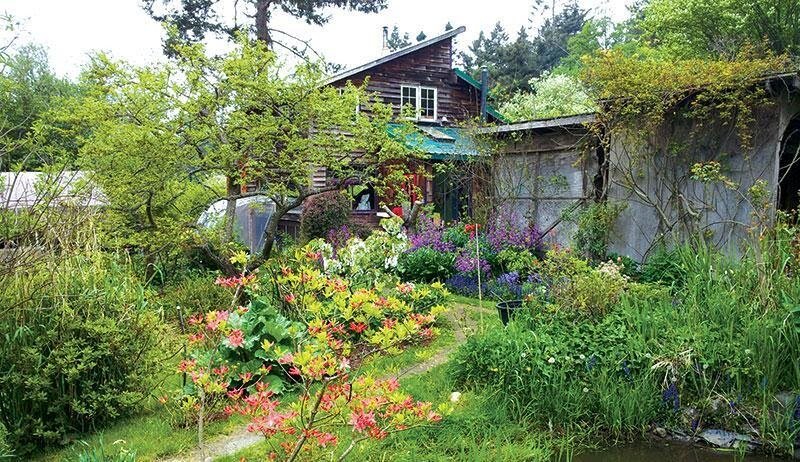In today’s world, many homesteaders are turning to container gardening for homesteads as a practical and sustainable way to grow their own food. Whether you have limited space or are looking for a more manageable gardening solution, container gardening offers a versatile and rewarding experience. This article will delve into the benefits, techniques, and tips for successful container gardening, ensuring your homestead thrives.

Why Choose Container Gardening?
Container gardening is a perfect choice for homesteaders for several reasons. First, it allows you to grow plants in small spaces, making it ideal for urban areas or properties with limited land. Second, containers provide better control over soil quality, drainage, and plant health. Additionally, they can be moved to optimize sunlight exposure and protection from harsh weather conditions.
Benefits of Container Gardening
Some of the advantages of container gardening include:
- Space efficiency: Maximizes the use of available space, allowing you to grow more plants.
- Pest control: Reduces the risk of pests and diseases by isolating plants from the ground.
- Flexibility: Easily move containers to access optimal sunlight and protection.
- Soil management: Improved control over soil quality and drainage.
- Accessibility: Suitable for people with limited mobility, as containers can be placed at a comfortable height.
Getting Started with Container Gardening
To begin container gardening for homesteads, you’ll need to consider several factors, such as the type of containers, soil, and plants you want to grow. Proper planning and preparation are essential for success.
Choosing the Right Containers
Selecting the right containers is crucial for the success of your garden. Consider the following when choosing containers:
- Material: Containers can be made from plastic, clay, wood, or metal. Each material has its pros and cons, so choose based on your needs and budget.
- Size: Ensure the container is large enough to accommodate the plant’s root system and provide adequate drainage.
- Drainage: Proper drainage is essential to prevent waterlogging. Ensure containers have holes or add a layer of gravel at the bottom.
Selecting the Right Soil
Soil quality is crucial for healthy plant growth. Use a high-quality potting mix that provides nutrients and retains moisture. You can also make your own mix by combining equal parts peat moss, vermiculite, and compost.
Planting and Maintenance
Once you have your containers and soil ready, it’s time to select the plants you want to grow. Consider the climate, available sunlight, and your personal preferences when choosing plants.
Best Plants for Container Gardening
Many plants thrive in containers, including:
- Herbs: Basil, mint, thyme, and parsley are easy to grow and require minimal space.
- Vegetables: Tomatoes, peppers, lettuce, and radishes are suitable for container gardening.
- Fruits: Strawberries, blueberries, and dwarf citrus trees can be grown in containers.
- Flowers: Marigolds, petunias, and geraniums add color and beauty to your garden.
Watering and Fertilizing
Proper watering and fertilizing are essential for container gardening success. Monitor your plants regularly and adjust watering based on their needs. Use a balanced, slow-release fertilizer to provide essential nutrients.
Pest and Disease Management
Pests and diseases can pose a challenge in container gardening, but with proper care and attention, you can minimize their impact. Regularly inspect your plants for signs of pests or diseases and take action promptly if needed. You can learn more about integrated pest management techniques to protect your plants.
Common Pests in Container Gardening
Some common pests you may encounter include:
- Aphids: Small insects that suck sap from plants, causing wilting and stunted growth.
- Spider mites: Tiny pests that cause yellowing leaves and webbing on plants.
- Whiteflies: Small, white insects that feed on plant sap and can cause leaf drop.
Preventing Diseases
To minimize the risk of diseases, practice good sanitation and avoid overcrowding plants. Remove dead or diseased plant material promptly and ensure proper air circulation around your containers.
Advanced Container Gardening Techniques
Once you have mastered the basics of container gardening for homesteads, you can explore advanced techniques to enhance your garden.
Vertical Gardening
Vertical gardening is an excellent way to maximize space and add visual interest to your container garden. Use trellises, wall-mounted planters, or hanging baskets to grow climbing plants and trailing vines.
Companion Planting
Companion planting involves growing different plants together to benefit each other. Some plants can improve growth, deter pests, or enhance flavor. For example, plant basil near tomatoes to repel pests and enhance flavor.
Container Gardening Challenges
While container gardening offers many benefits, it also presents challenges. Understanding and addressing these challenges will help ensure your success.
Common Challenges
Some common challenges in container gardening include:
- Root-bound plants: Occurs when a plant’s roots outgrow the container. Repot the plant in a larger container to resolve the issue.
- Overwatering: Can lead to root rot and other issues. Monitor soil moisture and adjust watering as needed.
- Limited nutrient availability: Container plants may need more frequent fertilization than those grown in the ground.
Conclusion
Container gardening for homesteads is an enjoyable and rewarding way to grow your own food and beautify your space. By following the tips and techniques outlined in this article, you can create a thriving container garden that meets your needs and enhances your homestead. For more tips on homesteading, you can check out backyard homestead ideas for inspiration.

FAQs
What is the best soil for container gardening?
A high-quality potting mix is ideal for container gardening, providing nutrients and retaining moisture. You can also create your own mix using equal parts peat moss, vermiculite, and compost.
How often should I water my container plants?
The frequency of watering depends on the plant type, container size, and environmental conditions. Monitor your plants regularly and adjust watering based on their needs.
Can I grow fruit trees in containers?
Yes, many dwarf fruit trees, such as citrus, apples, and cherries, can be grown successfully in containers.




